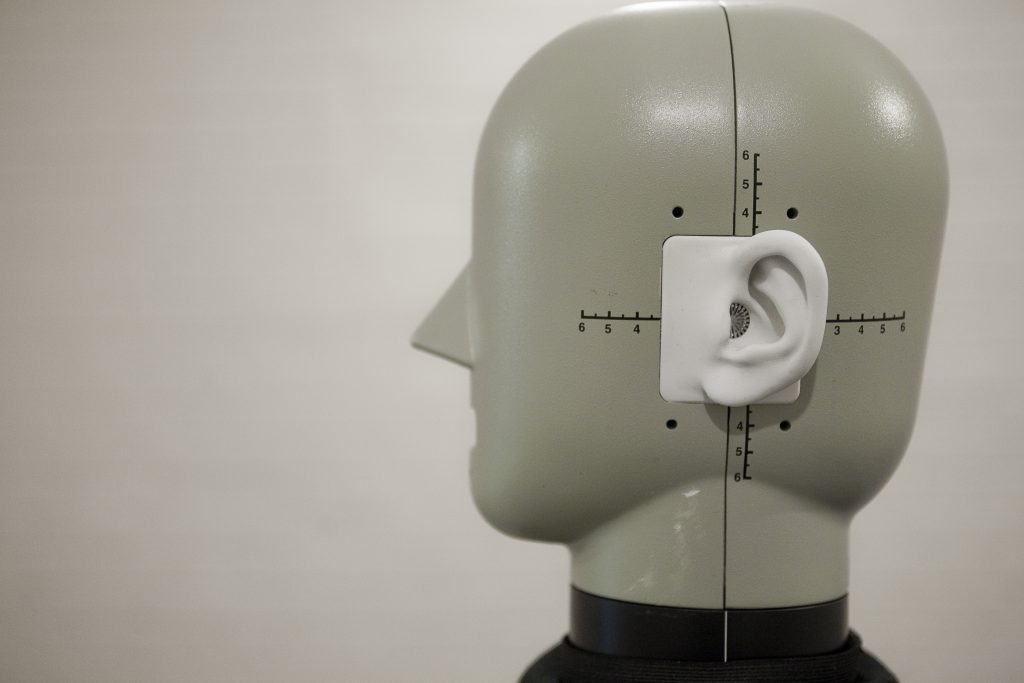Positive soundscapes project
In the acoustics community, sound in the environment – especially that made by other people – has overwhelmingly been considered in negative terms, as both intrusive and undesirable. The strong focus of traditional engineering acoustics on reducing noise level ignores the many possibilities for characterising positive aspects of the soundscapes around us. Desirable aspects of the soundscape have been investigated in the past, mainly by artists and social scientists. This work has had little impact on quantitative engineering acoustics, however, perhaps because of barriers to communication across different disciplines.
The Positive Soundscape Project set out to change this. The project was a consortium of five universities – Salford, Warwick, Manchester, Manchester Metropolitan and London Arts – and ran from 2006 to 2009 with a budget of £994k from EPSRC. The aims of the project were:
- To acknowledge the relevance of positive soundscapes, to move away from a focus on negative noise and to identify a means whereby the concept of positive soundscapes can effectively be incorporated into planning;
- The evaluation of the relationship between the acoustic/auditory environment and the responses and behavioural characteristics of people living within it.
The methods used were strongly interdisciplinary, with insights from sonic art, interviews and sound walks, as well as laboratory experiments on listeners all used to provide a better account of the relationship between the soundscape and the perceptions of those within it.
The project produced many outputs. A published summary of the scientific findings stated “Qualitative fieldwork (soundwalks and focus groups) have found that soundscape perception is influenced by cognitive effects such as the meaning of a soundscape and its components, and how information is conveyed by a soundscape, for example on the behaviour of people within the soundscape. Three significant clusters were found in the language people use to describe soundscapes: sound sources, sound descriptors and soundscape descriptors. Results from listening tests and soundwalks have been integrated to show that the two principal dimensions of soundscape emotional response seem to be calmness and vibrancy. Further, vibrancy seems to have two aspects: organisation of sounds and changes over time.”
The team behind this project came from a very wide range of disciplines – social science, physiological acoustics, sound art, acoustic ecology, psychoacoustics, product perception and room acoustics. The range of methods and outputs is demonstrated by this table showing the parts of the Positive Soundscape Project.
Part Method Main output Reference Inputs from Outputs to a Soundwalks and interviews Qualitative: semi-structured interviews Cognitive soundscape components Davies et al. (2013) c, h b, c, f, g, h, i, j, k, l b Focus groups Qualitative Cognitive soundscape features Davies et al. (2013) a, h f, h, i, j, k, l c Listening tests Quantitative: semantic differential scales Perceptual dimensions: calmness and vibrancy Cain et al. (2013) & Hall et al. (2013) a, h d, e, i, j, k d Neuroscience Quantitative: fMRI scans Validation of perceptual dimensions; brain images Irwin et al. (2011) c i, j, k e Physiological Quantitative: heart rate, galvanic skin response Relationship of basic physiology to perception Hume & Ahtamad (2013) c i, j f Speech intelligibility Quantitative: signal processing and listening tests Draft modification to speech intelligibility index Davies et al. (2009) a, b, i, j g Soundscape simulator Artistic and quantitative Simulation device/method and webpage Bruce et al. (2009) & Cusack: The Sound Database a, j b, i, j, l h Favourite sound Artistic: field survey and recording Favourite sounds database and CD Cusack: Favourite Sounds a a, b, c, i, j i Exploration of positive soundscapes Artistic: multiple original commissions Art exhibition Cusack et al., Sound Escapes, Space Gallery, 129 – 131 Mare Street, London, UK. Curators A. Carlyle and I. Revell (25 July – 15 August 2009) All f, g j Conceptual framework Qualitative: deskwork Sound-scape perception model Jennings & Cain (2013) All All k Soundscape planning and assessment Qualitative: deskwork Methods for planning and assessment Adams et al. (2009) & Davies et al. (2009) a, b, c, d i, j l Soundscape expectation Qualitative: interviews and observed simulator use Model of expectation, context and competence Bruce et al. (2009) a, g i, j
